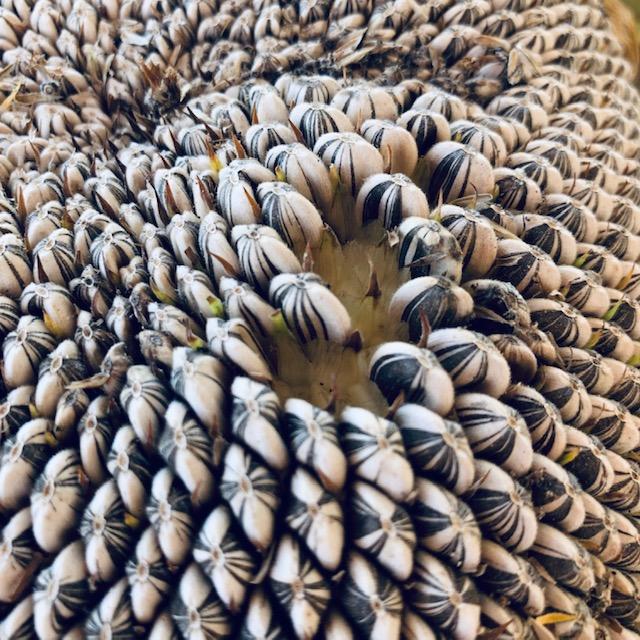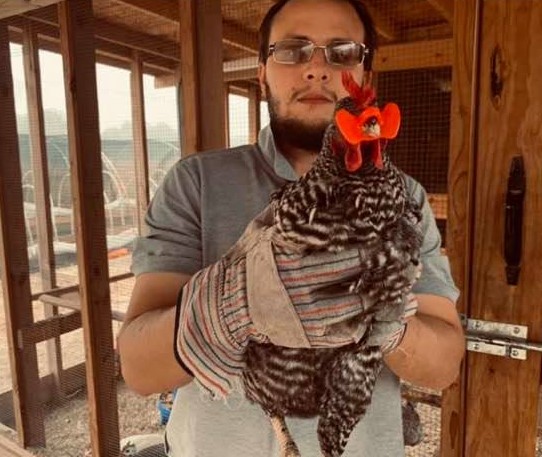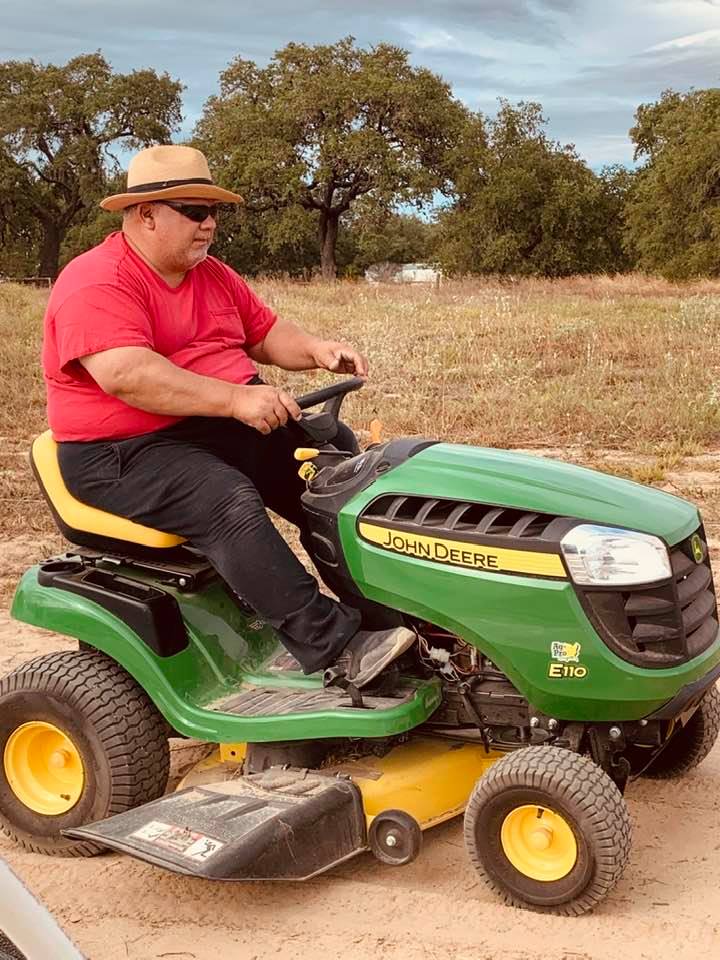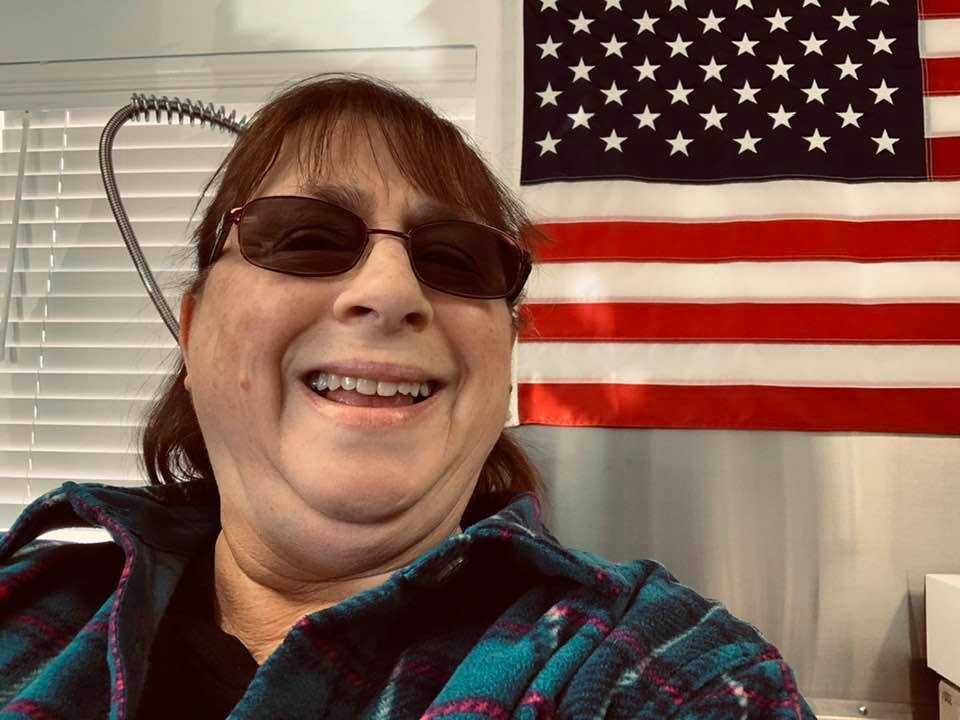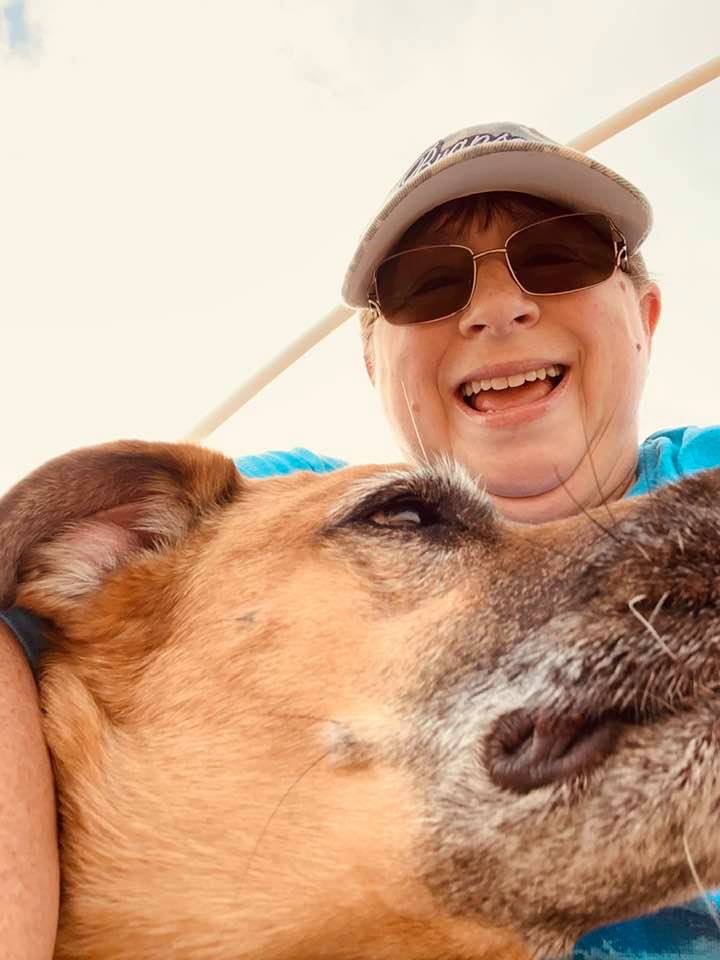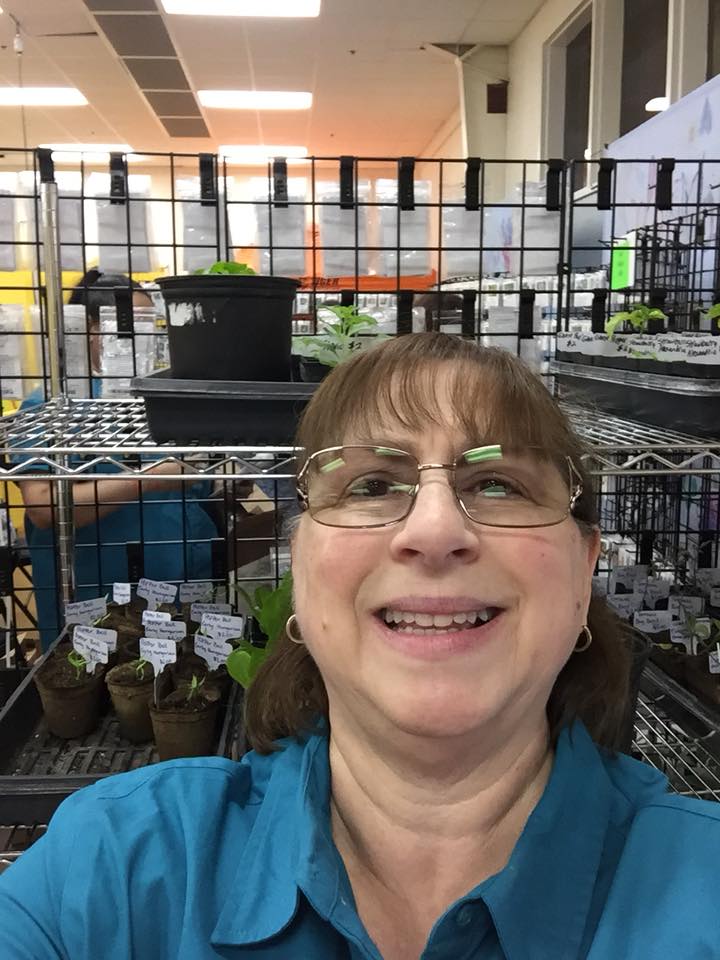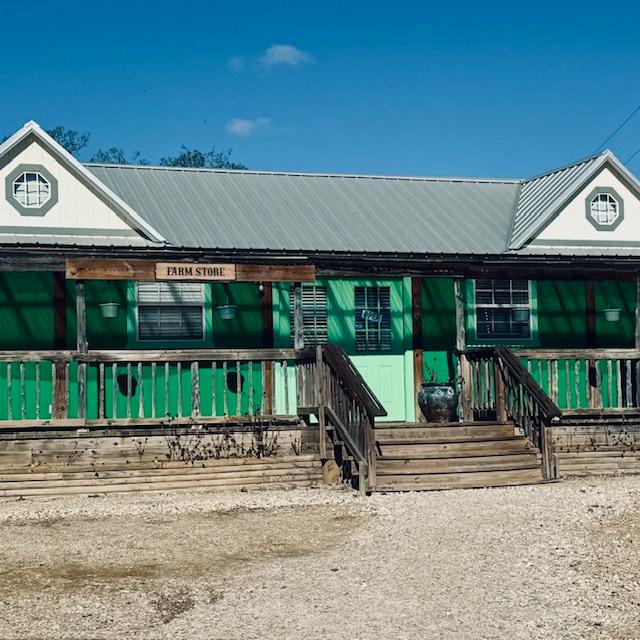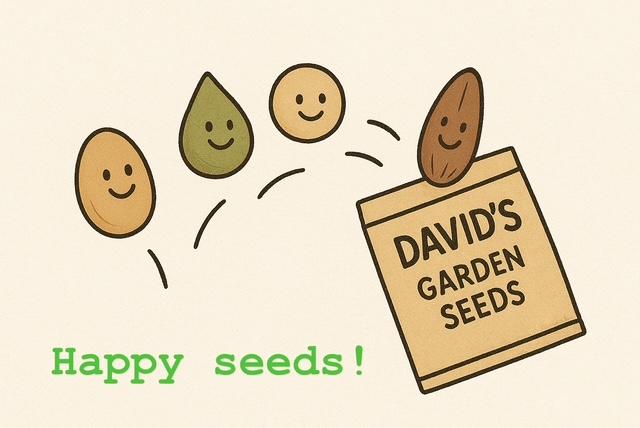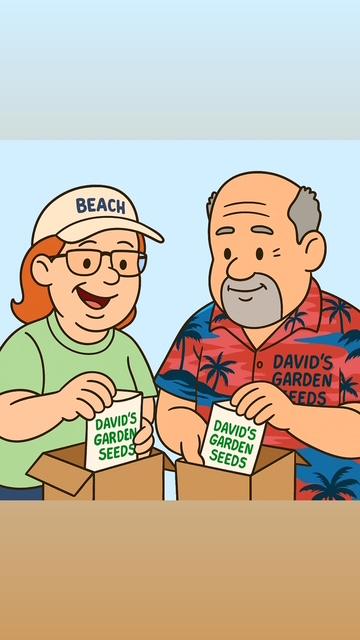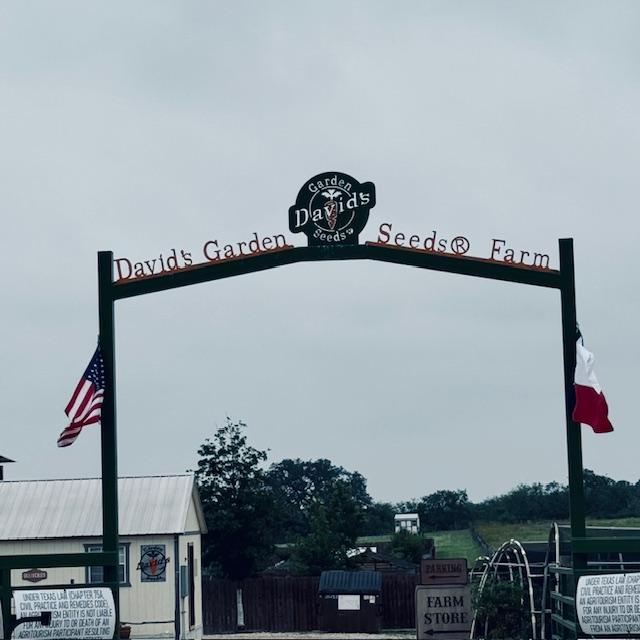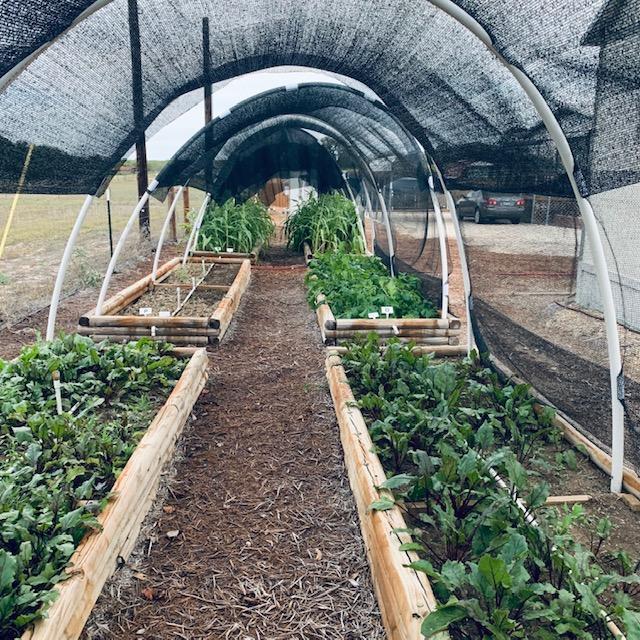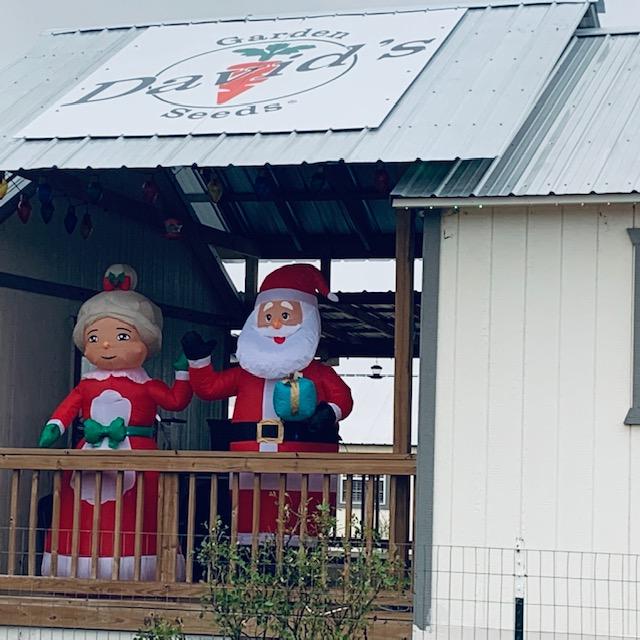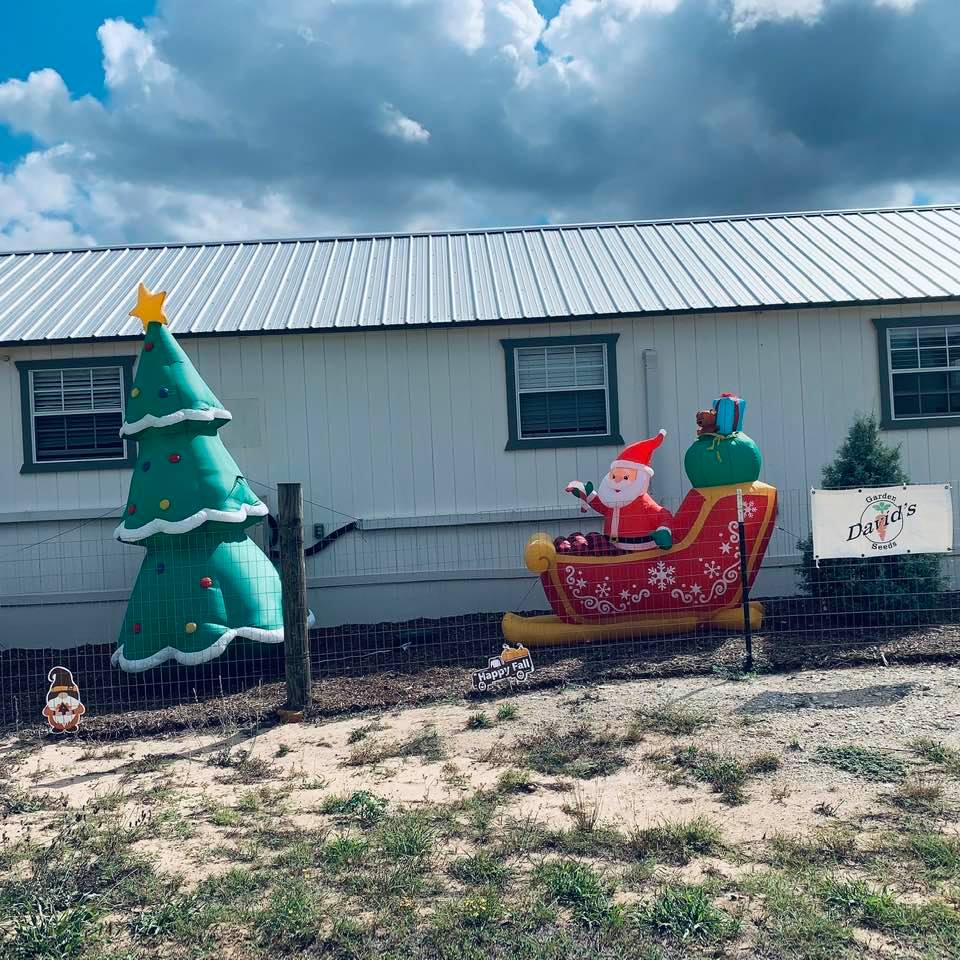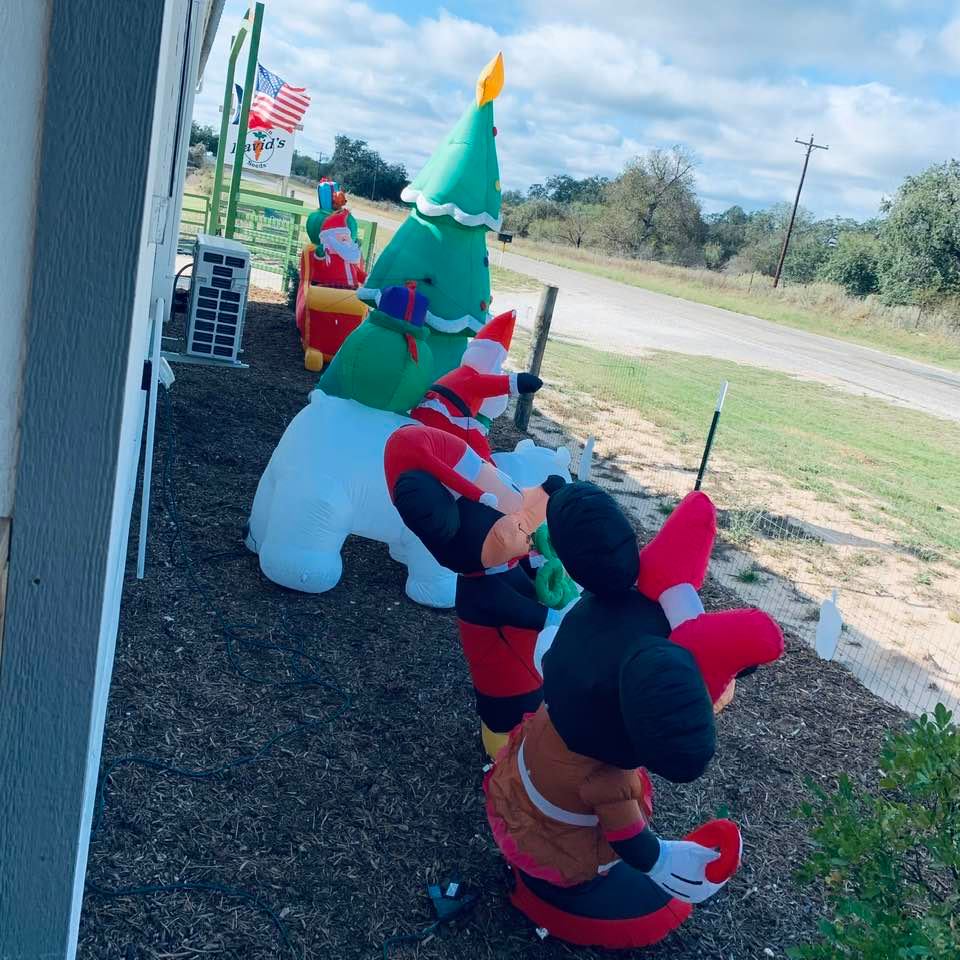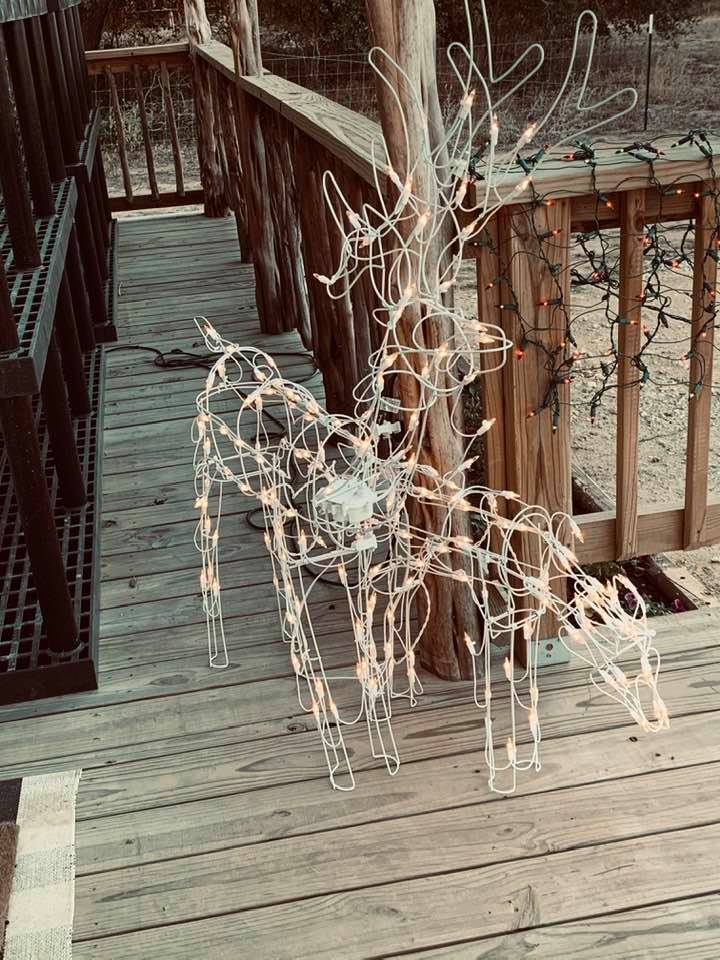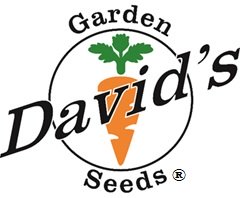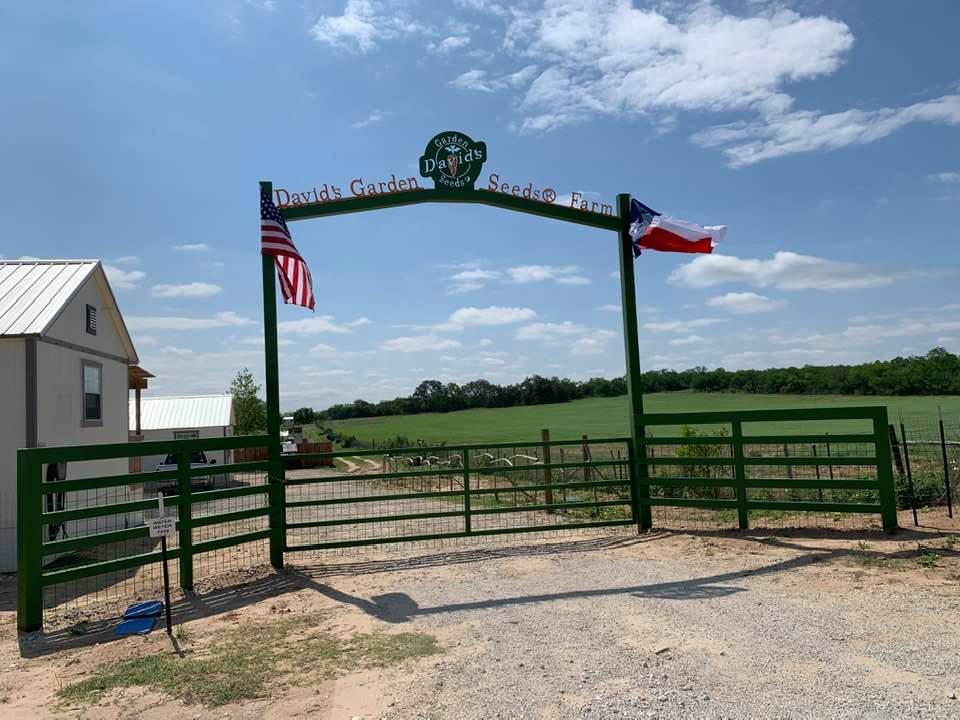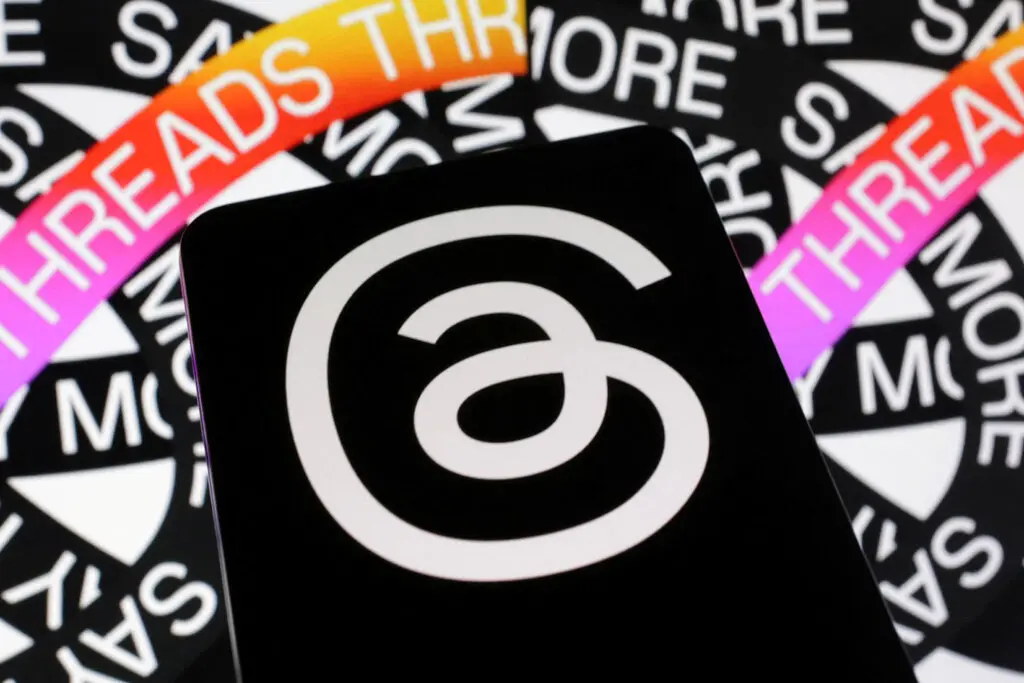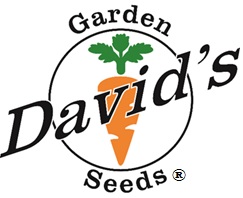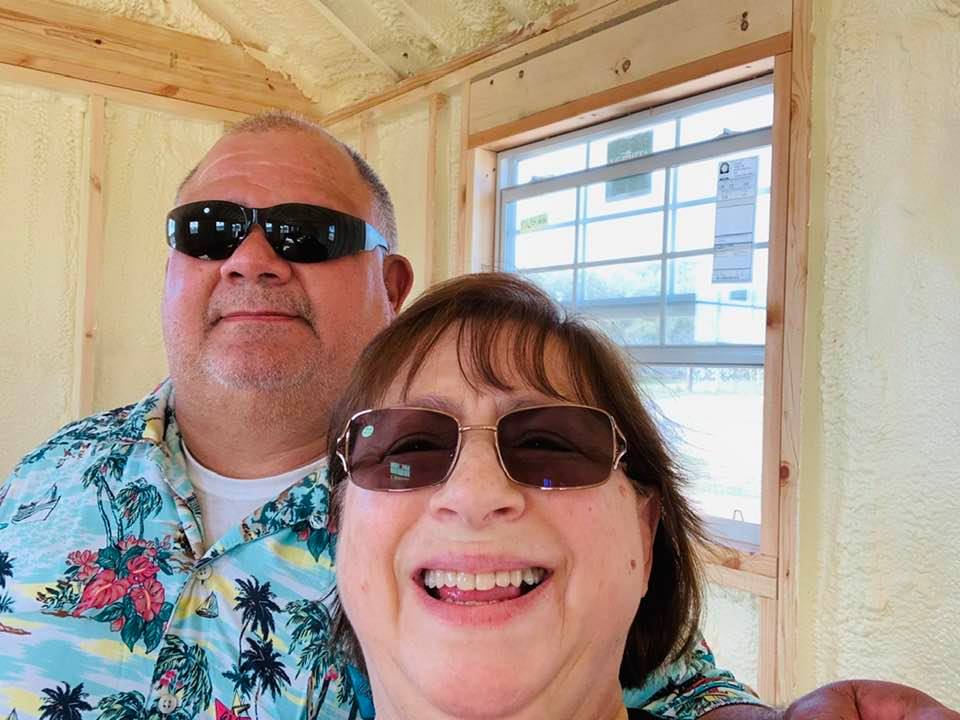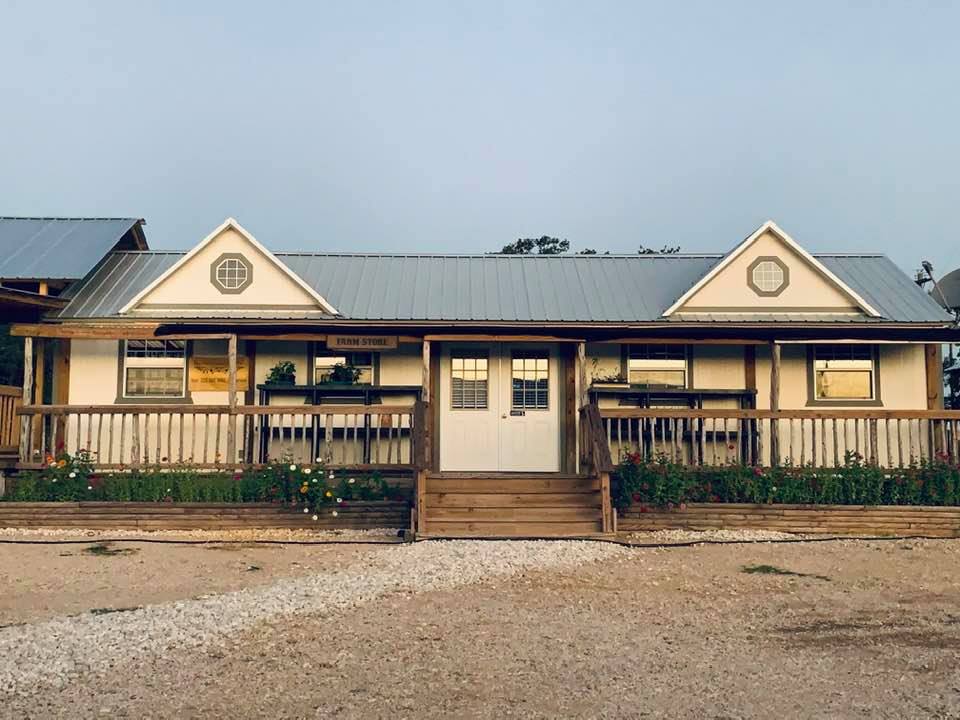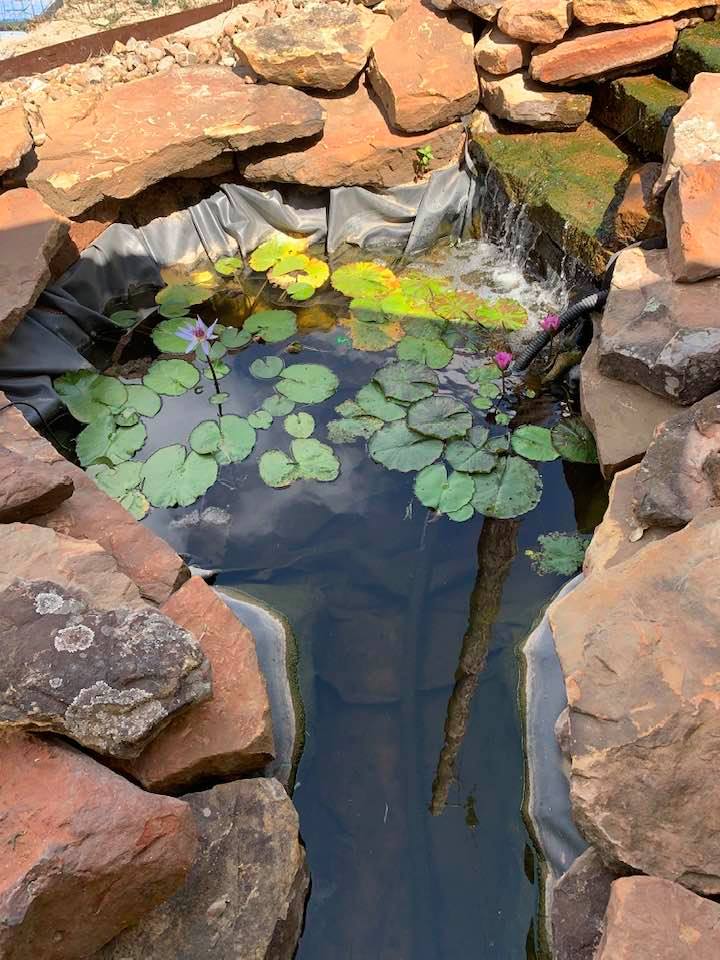Saving Seeds
As a seller of garden seeds, David and I don't normally tell people about saving seeds. Obviously, we want people to buy their seeds from us each year. Yet, it is important that you know how to save seeds so you can feed your family. What if something happens and you need seeds but there is no way to get them? Since the year 2020, those what ifs have gotten a little more possible in our everyday lives so we are going to talk about this important step in gardening.
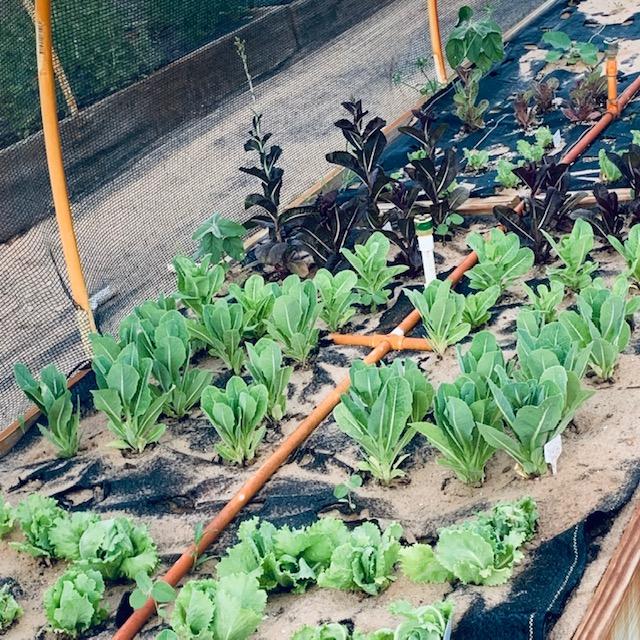 2 lettuces growing together. The darker lettuce has bolted, grown a stem and is producing a flower which will have seeds. If you are saving seeds, don't plant 2 varieties of the same seed together.
2 lettuces growing together. The darker lettuce has bolted, grown a stem and is producing a flower which will have seeds. If you are saving seeds, don't plant 2 varieties of the same seed together.First of all, you want to save heirloom seeds. An heirloom has been around for about 75 years or more and you will always get your best flavor with an heirloom. An heirloom always grows the same, whether it was planted 50 years ago, this year, or next year so you can always expect to get the same wonderful food that you get every year with all of your favorite heirloom varieties. If you are looking for a great source of heirloom seeds, of course, look to David's Garden Seeds®, the largest Texas heirloom seed provider. You can depend on us to have fresh seeds for your spring and fall gardens. Almost all of our seeds are heirloom seeds.
If you are planning to save seeds, do not plant more than one variety of the same seed because of cross pollination. If the two lettuce varieties in the photo above are cross pollinated, the seeds you save will most likely be a mixture of green and red because they are close together and the wind, bees, butterflies, etc. will bring some of the green pollen to the red pollen and vice versa.
Saving Seeds - How To Do It
It is fall and you are harvesting your crops. You wonder if there is a way to save seeds. Should you be saving seeds for an emergency? Of course! But I don't see seeds on some of these vegetables. Where are they and how do I find them to save them?
When you cut many of your garden's harvest, you will see seeds growing inside. Tomatoes, cucumbers, beans, peas, squash, zucchini, peppers, and more all have seeds when you cut them open. So it is fairly easy. Pull the seeds out of the fruits and put them in a bowl to dry out.
Harvest the fruit off of the plants that you intend to save seeds from, leaving some of the best fruits on the stem. Leave them on until they continue growing big and then dry on the vine. Once they are pretty dry, cut them off and bring them inside. Or if an animal has taken some bites out of a fruit while it is still on the vine, cut and bring it inside to dry out. Once dry, cut it open. In the case of beans and peas, cut the pod open and pull out the bean seeds or peas and allow them to dry in a single layer where they won't go moldy.
If you want to harvest corn seed, leave the corn on the stalk. Once the ear has dried out, pull it, cut off the worm that is probably in the ear at the top and let the kernels dry. Once they are dry, pull them out and let them dry a little more.
Once your seeds are dry, put them in containers, write down what variety each seed is and date it. Store your seeds in a cool, dry place. You do not need to freeze them or even refrigerate them.
But This Plant Doesn't Seem To Have Seeds!
Bolting 101
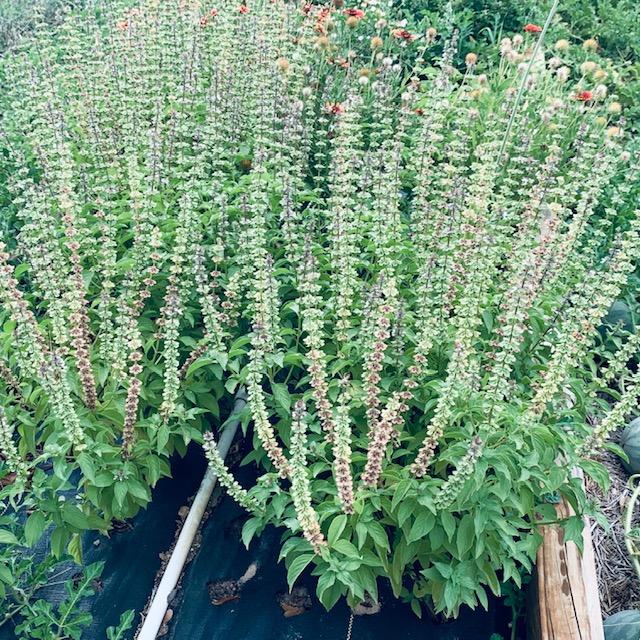 We purposely let this basil plant bolt. See all of the tiny flowers all the way up the stem? That is where the seeds are. Once the flowers dry, the seeds are ready to collect for next year.
We purposely let this basil plant bolt. See all of the tiny flowers all the way up the stem? That is where the seeds are. Once the flowers dry, the seeds are ready to collect for next year.Root plants, like carrots, beets, radishes, turnips, onions, and more all grow their fruit under the ground so there are no seeds...yet.
Greens also do not have seeds in their leaves. Saving seeds on roots and leafy greens is a bit different but not hard to do. Harvest most of your crop and leave a few of the best looking leaves in the ground. Next, you have to let the plants bolt.
What is bolting? Bolting is when the plant goes past the point of ready to be eaten to growing stems and flowers. Let them grow a tall stem and then a flower grows. That is where the seeds are for these plants. Do not pick the flowers. Let them die on the stem and dry out. Then cut the dried flower and find the seeds. It is easiest if you put the dried flowers on a white paper plate. You will be able to catch the tiny seeds and you won't have any problem finding them on a white paper plate.
Saving seeds from flowers and from herbs is done much the same way as with roots and greens. The only difference is that if flowers are not all picked, they will drop their seeds right where they are planted and come up again in the spring. My zinnia garden is loaded with zinnias that just keep dropping their seeds and coming back the next season. If you want to save some seeds for a different raised bed, do as above and let the flower dry out. Cut the flower off and put on a white paper plate to find the seeds. Then store in an envelope, zip bag, or container in a cool, dry place.
Saving Seeds - Tomatoes
The first seed we ever saved was from some of our Rose Beefsteak Tomatoes. David brought some Rose Tomatoes into our kitchen and cut them in half. He scooped the seeds out of the halves and put them in a bowl. Then he filled the bowl up about halfway and stuck it up on top of our refrigerator. They smelled sort of not nice.
Make sure where you place the bowl, it is out of direct sunlight. Sort of swirl the water several times a day for about three days. After three days, the pulp and the seeds separate and go to the bottom of the bowl. At this time, David dumped it all into a strainer and then rinsed it in the strainer, which kept the seeds and washed out everything else. Let the seeds dry out on some paper towels in thin layers. Do not put away until they are completely dry or they will go moldy.
Most seeds should be left in the fruits on the plants until they start turning color and losing moisture. It is best in most cases to let them dry on the vine and then cut the fruits open and get the seeds. That is really the best way in most cases. We do this with okra, gourds, and so many more.
Just last week, we had some seeds for saving in fruit drying on plants out in our garden. They had been drying for several weeks and one of our employees picked every single fruit and threw them all out but did not tell us until the trash man came. We just don't have the time to check on things every single day because we are running a business. So all of that is gone and so is he.
Peppers, melons, beans, and peas, should be brought in with the normal harvest and cut open. Grab the seeds right there and set them to dry. Make sure everyone in the house knows that this is not trash and not to touch the seeds.
Remember that you will get your best plants using heirloom seeds. Open pollinated seeds can be saved as well. They just haven't been around long enough to be called heirloom. Hybrid seeds will either not grow or something will grow that is not at all like what you harvested.
Return from Saving Seeds to Companion Planting
Anything To Share On This Topic?
Would you like to share additional information about this topic with all of us?
Since 2009, over 2,000,000 home gardeners, all across the USA, have relied on David's Garden Seeds® to grow beautiful, productive gardens. Trust is at the heart of it. Our customers know David's Garden Seeds® stocks only the highest quality seeds available. Our mission is to become your lifetime supplier of quality seeds. It isn't just to serve you once; we want to earn your trust as the primary supplier of all of your garden seeds.
Watch Our 2022 TV Commercial!
Sing Along To Our Jingle
♪♫♪♪ ♫ ♪ ♫♪♫♫
♪♫♪♪♫♫
Peppers and peas
And lots of yummy greens
You can't go wrong
With Squash This Long
At David's Garden Seeds
♪ ♫ ♪ ♫
Our New 2024 TV Ad
Please like and subscribe on YouTube and come visit us at our Farm Store! The music on our TV ad was written, played, and sung by our son, Matthew Schulze. You can meet him when you come to the farm. He just might give you a tour. Ask him to grab a guitar and sing our jingle that he wrote.

We are David's Garden Seeds®. If you need great seeds, we've got over 1,200 varieties to choose from.
Subscribe To Mrs. David's Garden Seeds® Newsletter For FREE!
Find out what is going on down on the farm by reading our blog and by subscribing to our free newsletter for all of the information going down at David's Garden Seeds® and on the farm. I love to share helpful information with you. Please let your friends know and y'all come on down for a visit when you get the chance. We would love to meet you!
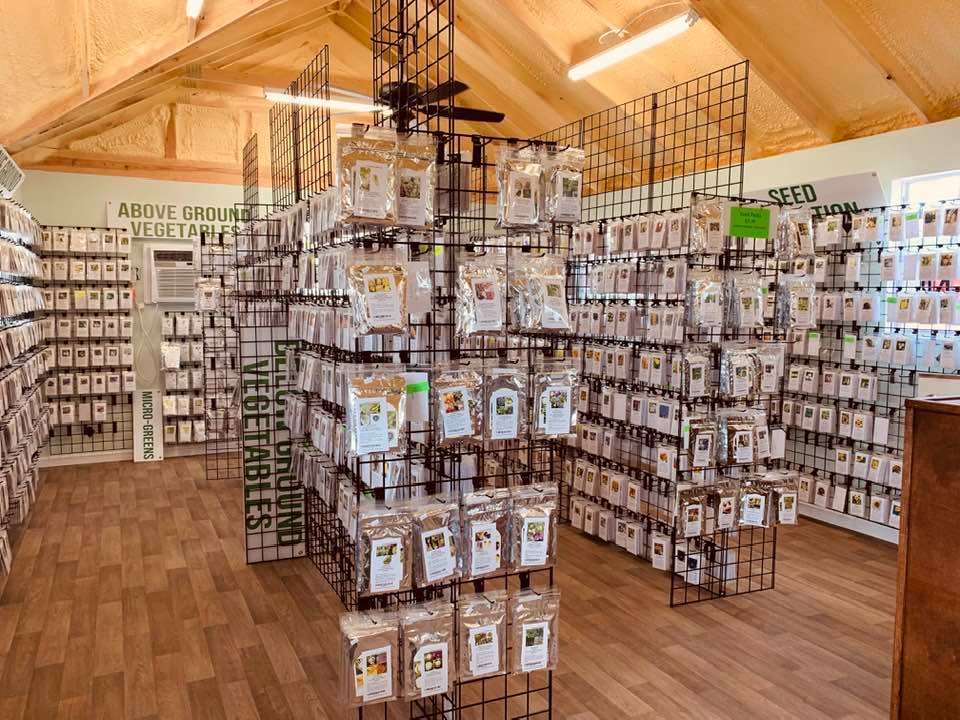
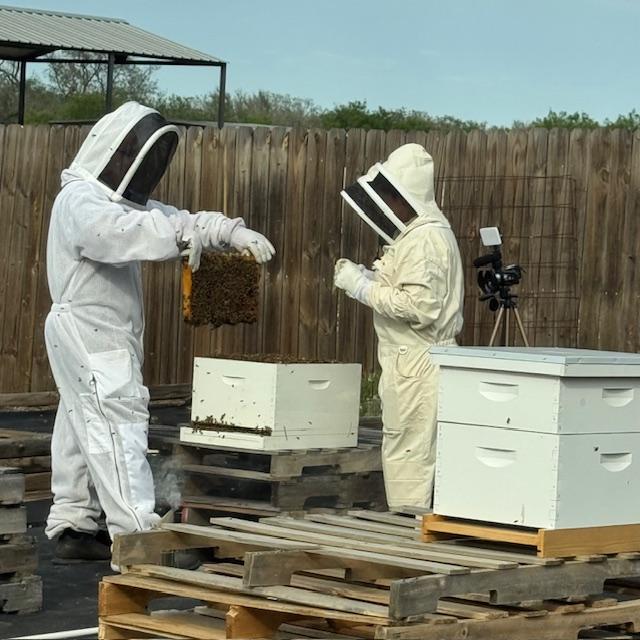 Our bee hives
Our bee hives Our fish pond
Our fish pond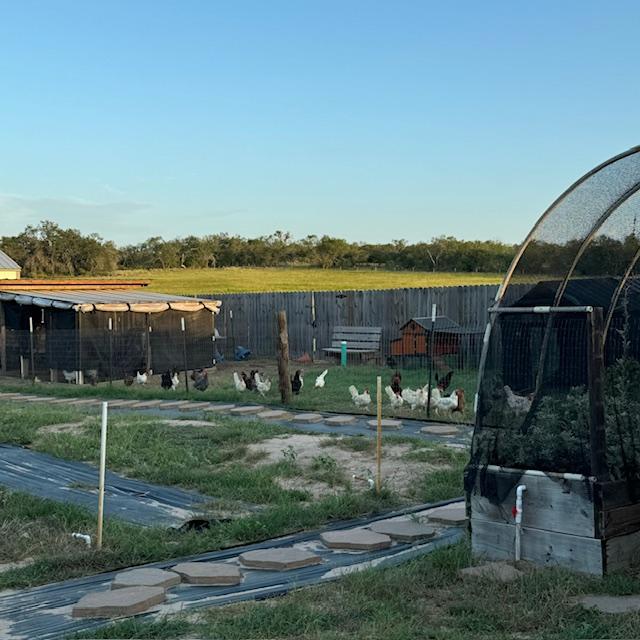 Our chickens
Our chickens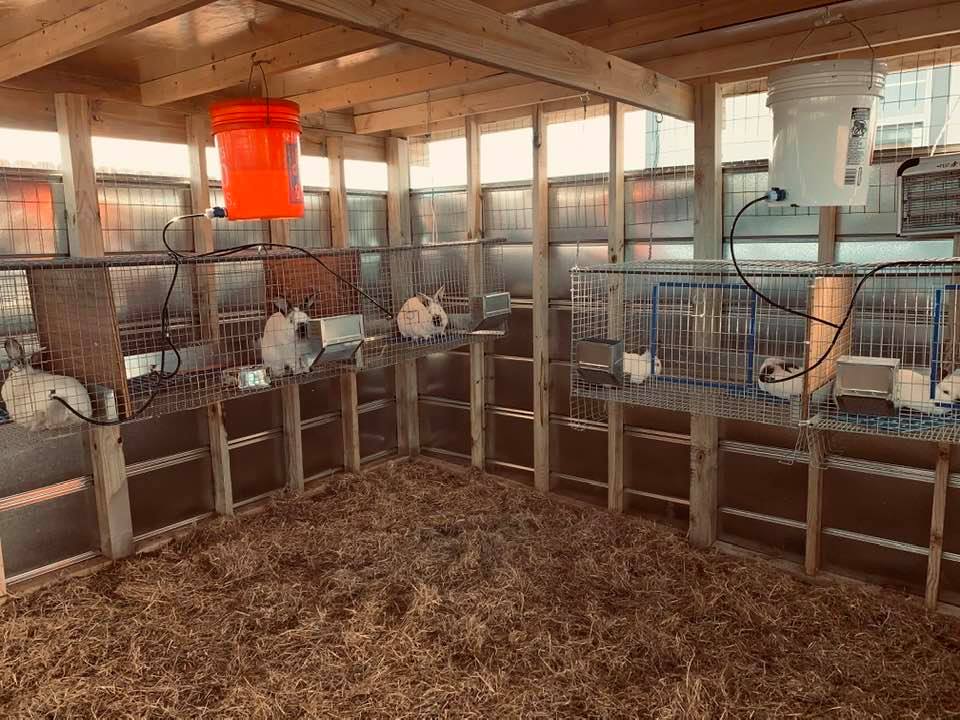 Our bunny rabbits
Our bunny rabbits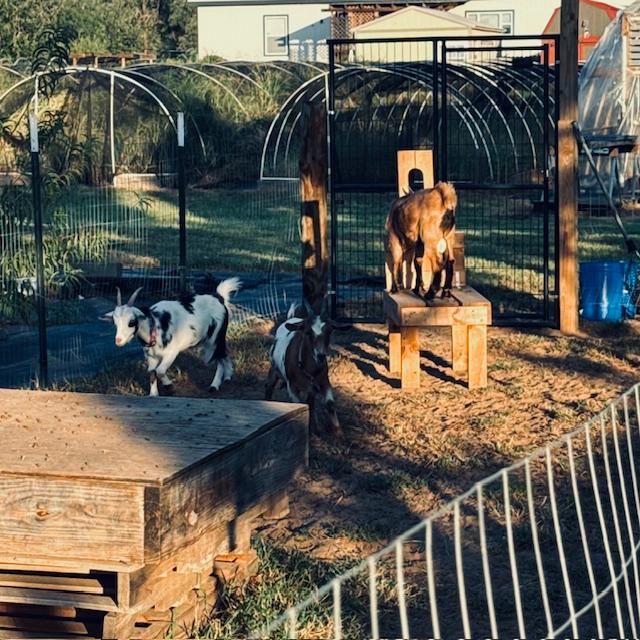 Our Nigerian Dwarf goats
Our Nigerian Dwarf goats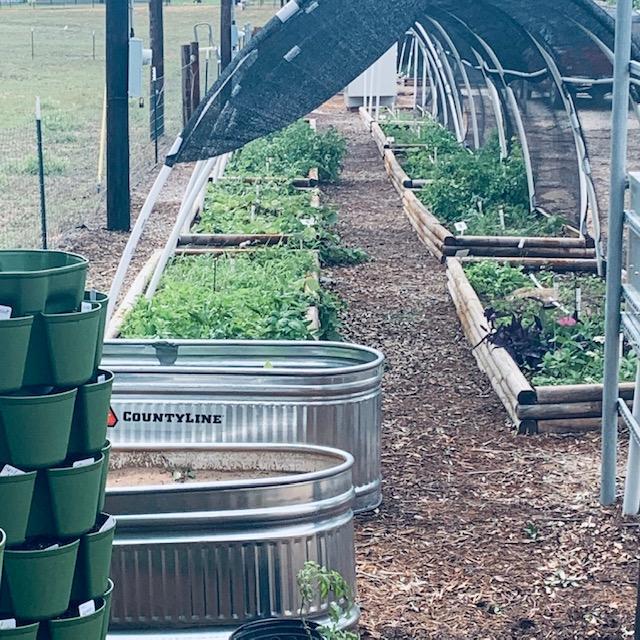 A few of our raised garden beds
A few of our raised garden beds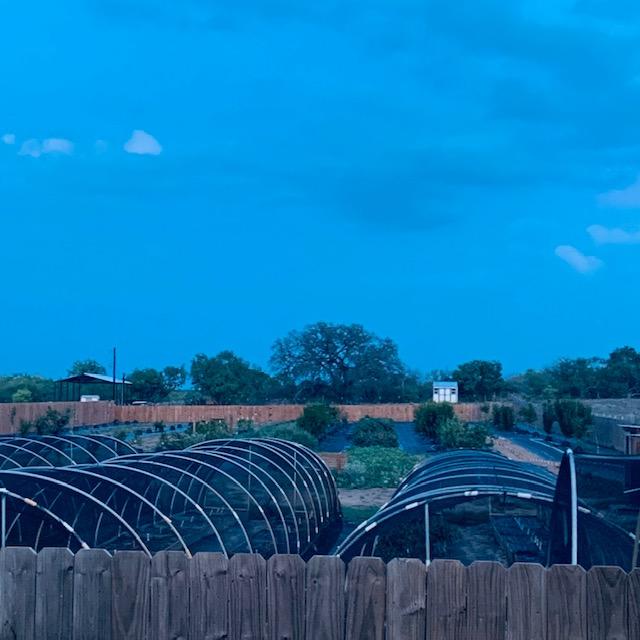 Our orchard and hoop houses
Our orchard and hoop houses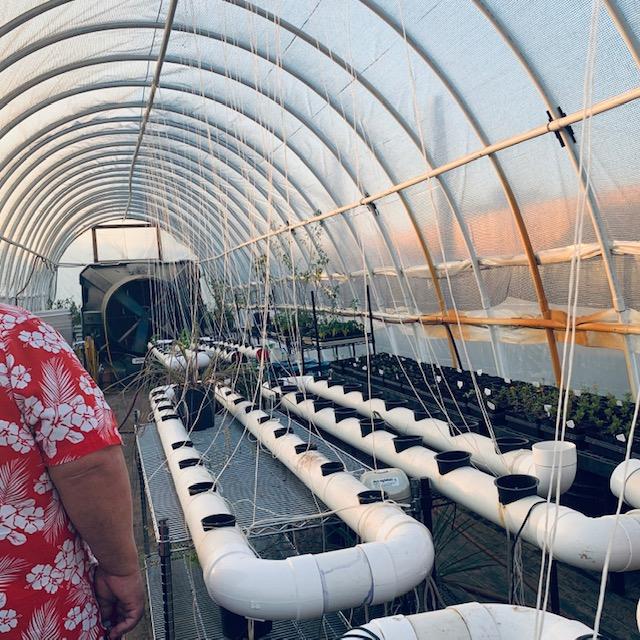 Inside our high tunnel
Inside our high tunnel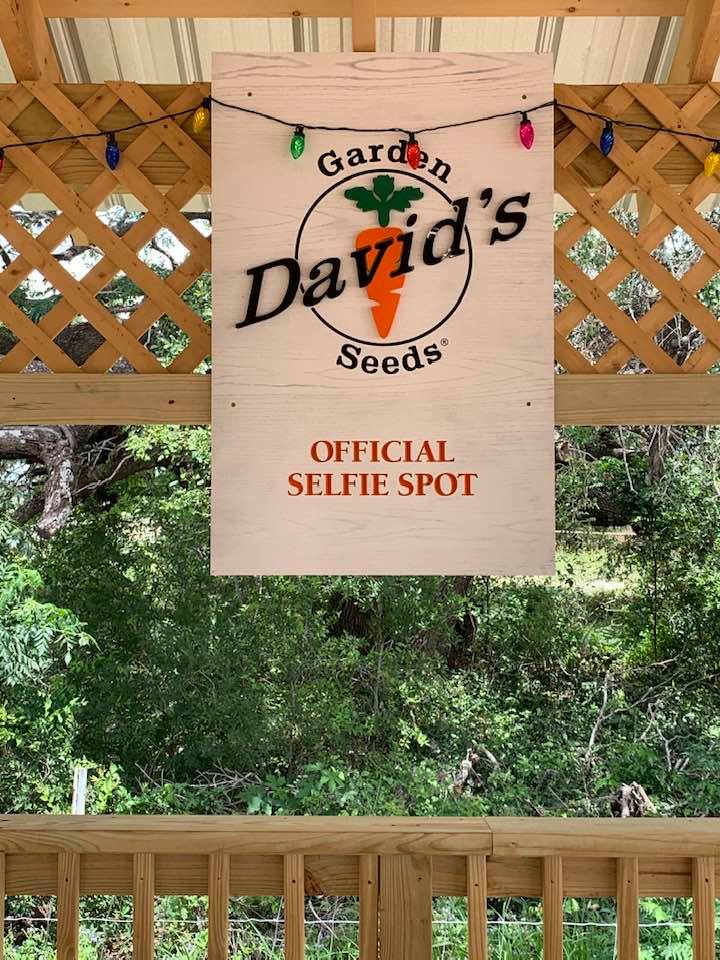 Take a selfie at our official selfie spot!
Take a selfie at our official selfie spot!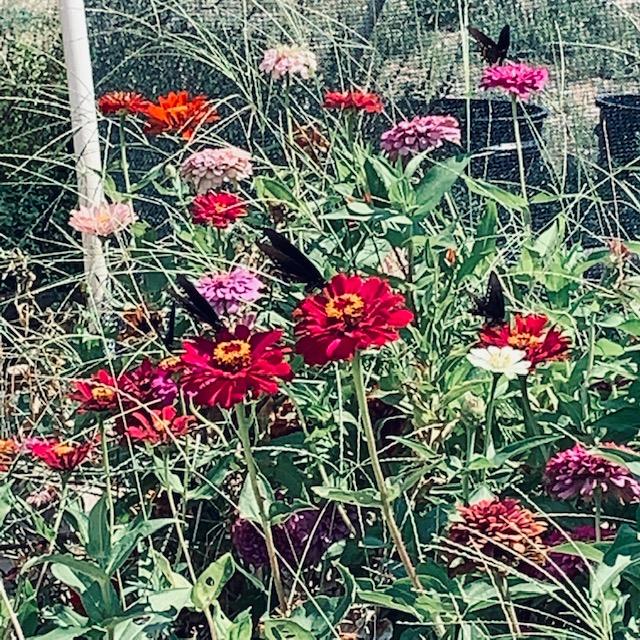 Flowers, bees, and butterflies are everywhere!
Flowers, bees, and butterflies are everywhere!